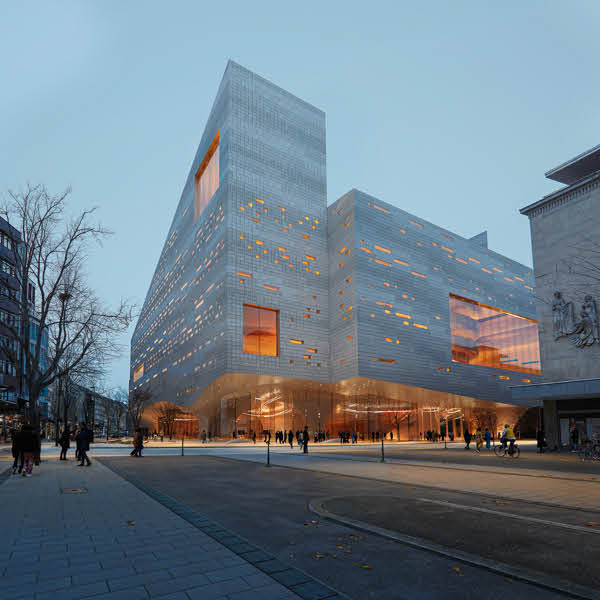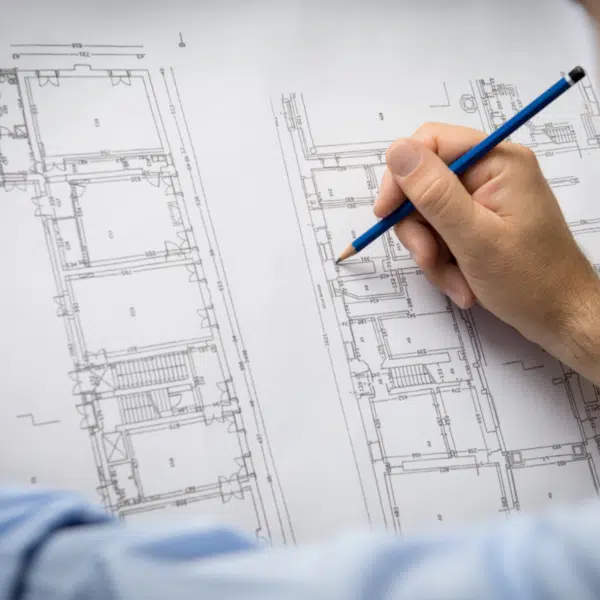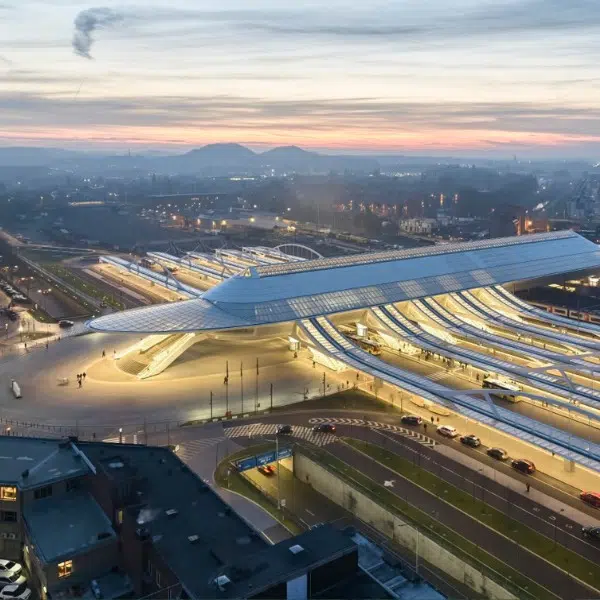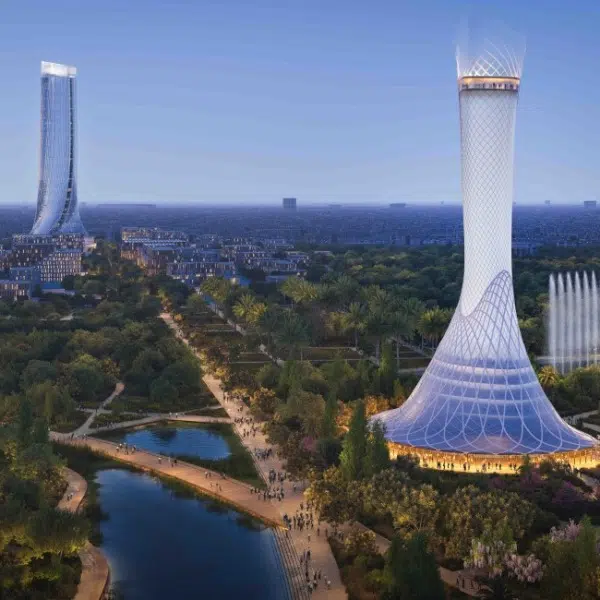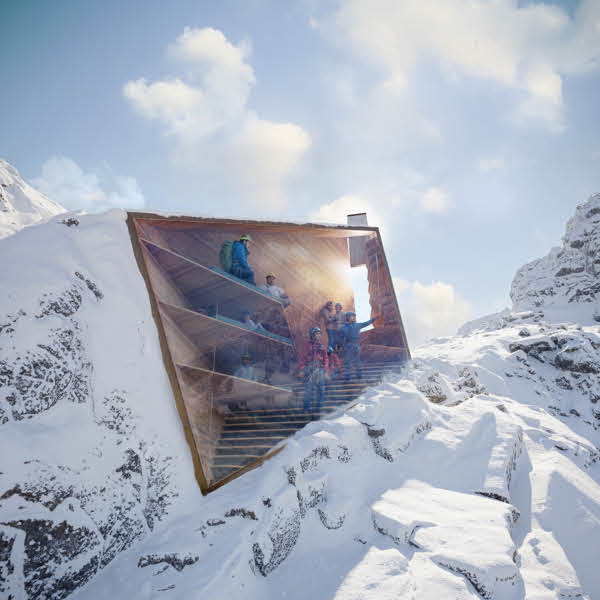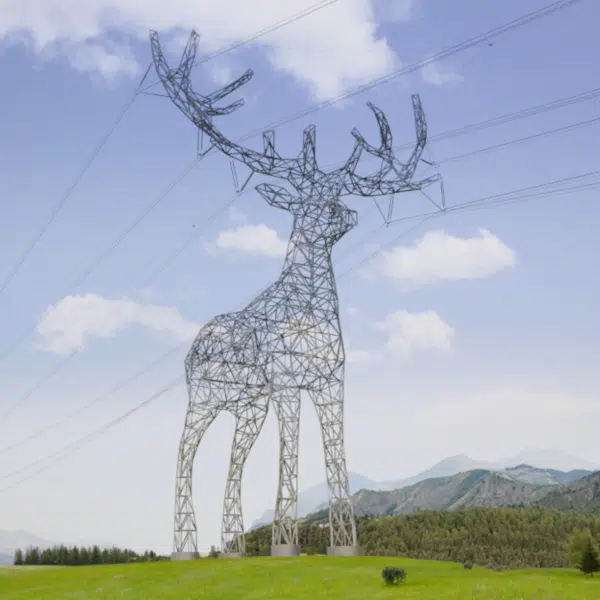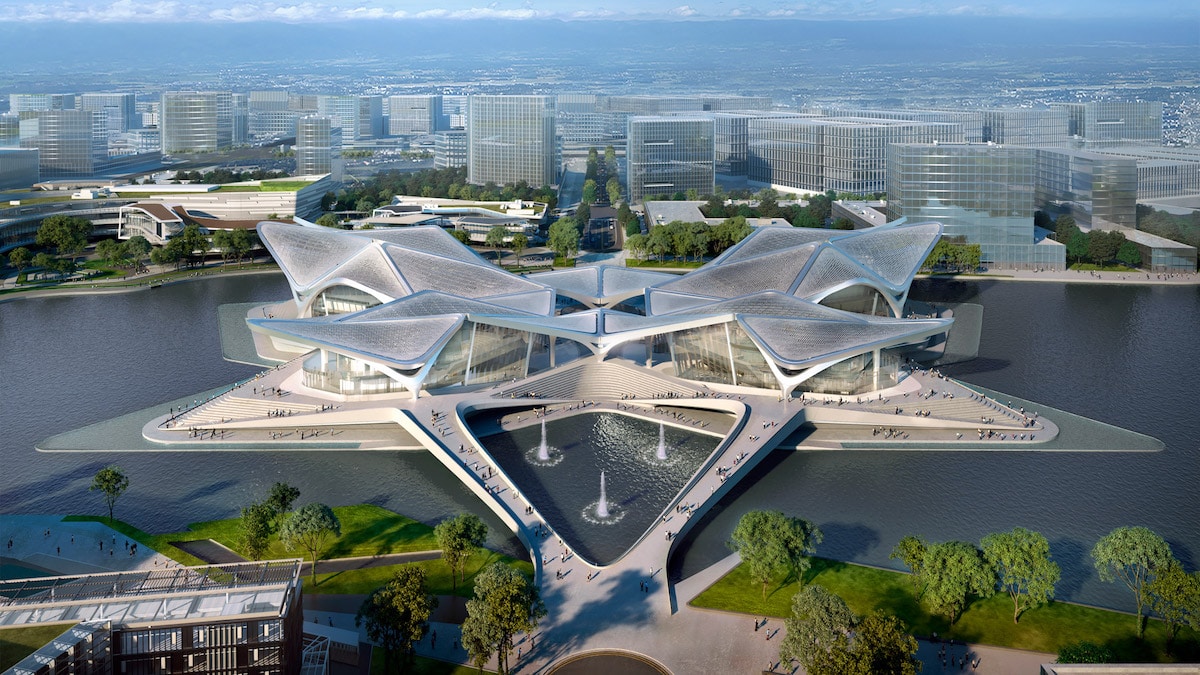
Rendering: Minmud
The Zhuhai Jinwan Civic Art Centre, designed by Zaha Hadid Architects (ZHA), is currently taking shape in southern China. The project is designed as a massive cultural center that will serve the region by introducing incredible new civic programs. Each of the four wings of the art center houses unique building programs. They include an art museum, a science center, a 500-seat hall for various events, and a 1,200-seat theater. These four community amenities are joined together by a central public space and connected by bridges on either side of the waterfront.
It was important to celebrate each of these new attractions while creating a unified visual language for the massive structure. “Echoing the chevron patterns of migratory birds flying in formation over southern China, the latticed steel canopies over each venue are configured through repetition, symmetry, and scale variation,” ZHA explains, “resulting in a composition of related elements that respond to the different functional requirements of each building.”
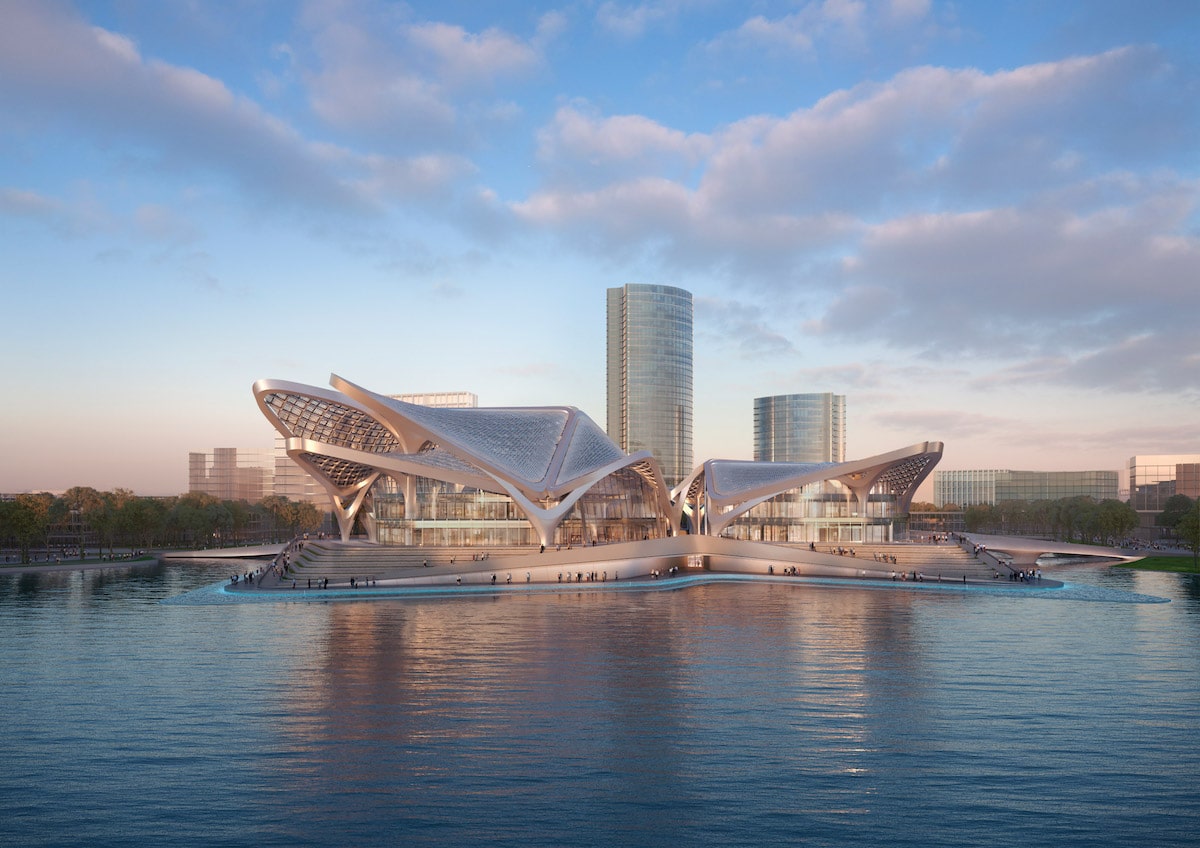
Rendering: Minmud
The design language makes the project a recognizable landmark and meets the technical requirements of the building program while also making the construction process easier. “Every building-module of the roof is self-supporting and self-stabilizing,” describes the firm. “The repetition of the modules optimizes pre-fabrication, pre-assembly and the use of modular construction.”
Connectedness and openness are an important part of the project’s aesthetic, from staggeringly tall glass facades to futuristic bridges that welcome you into the site. The soaring form is an abstraction of birds migrating across the country. This is an apt comparison considering this building acts as a center for innovation and connectivity. Its position in the heart of Jinwan District’s ecological new development unites the project to transit centers like the new Zhuhai Airport Intercity Railway, which links passengers from other major cities in China.
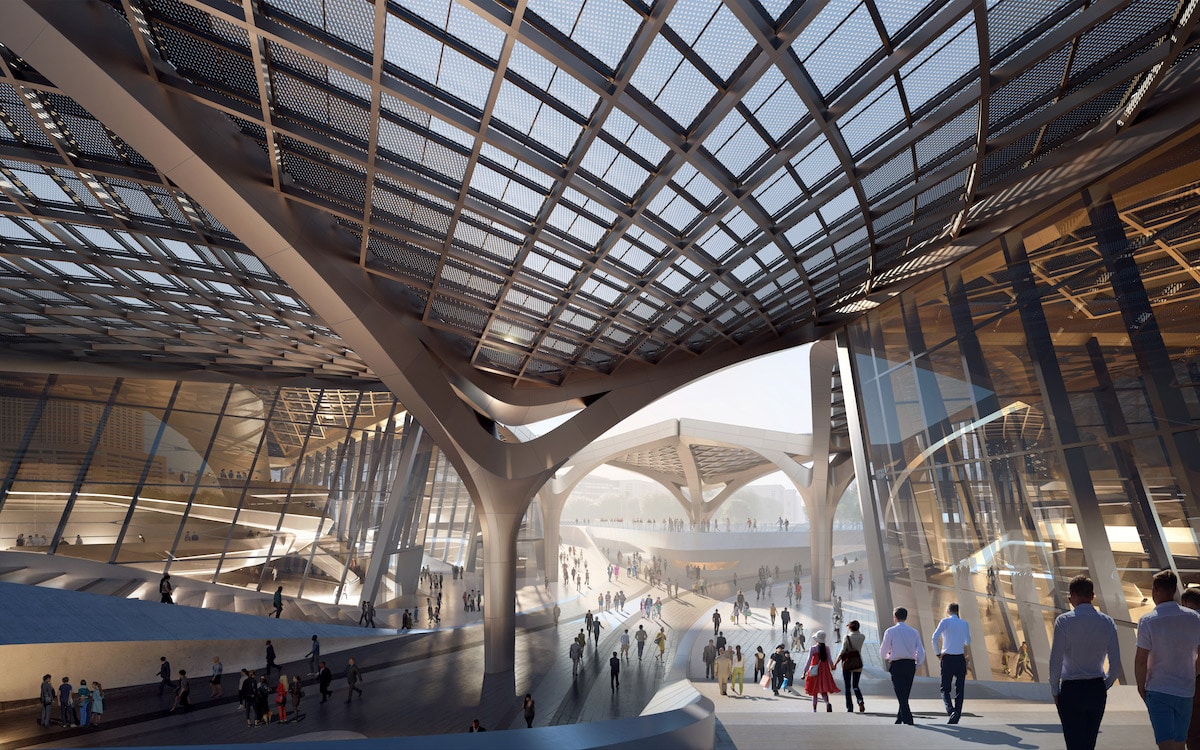
Rendering: Slashcube
The building includes some “green” considerations that allow the Art Center to be more environmentally friendly. Its envelope is designed with double-insulated glazing and is protected by the cantilevering roof which helps minimize the amount of sun entering the project and thus minimizes the amount of energy needed to cool the building. Panels are also carefully designed with the same consideration towards solar heat gain. Other environmentally conscious design features include plans to reuse rainwater with natural filtration systems and to limit water use through advanced soil-moisture sensors.
To see more incredible projects by Zaha Hadid Architects and to learn about the “Queen of the Curve” herself, you can read our biography on Hadid and our favorite projects by ZHA.
New images have been released of Zaha Hadid Architects' stunning Zhuhai Jinwan Civic Art Centre, which is currently under construction.
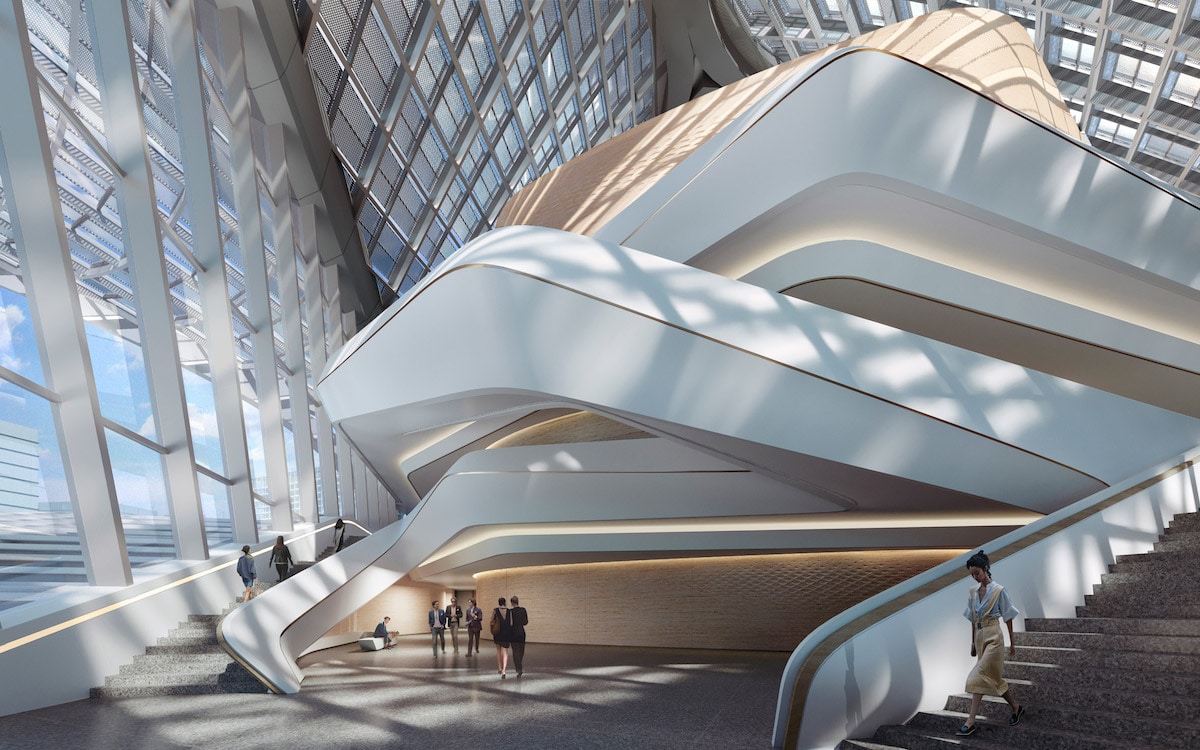
Rendering: Methanoia
Each of the four wings of the art center houses unique building programs including an art museum, a science center, a 500-seat hall for various events, and a 1,200-seat theater.
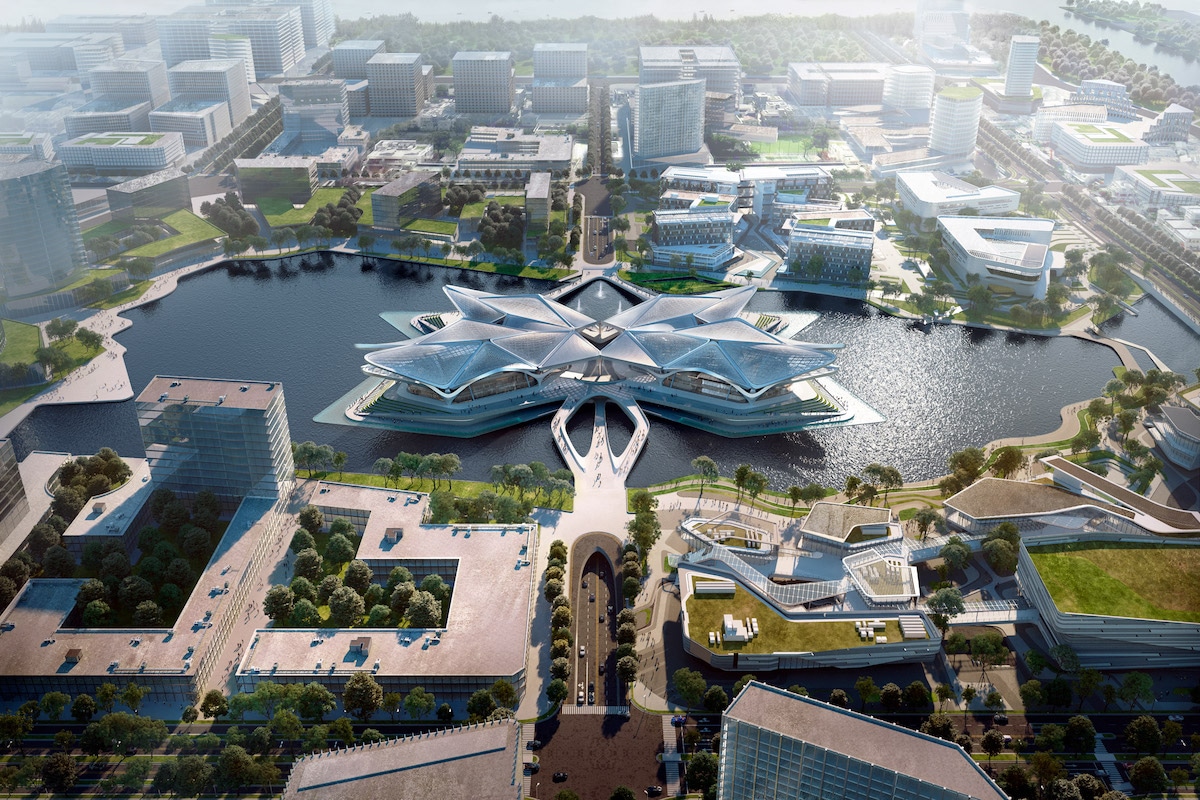
Rendering: Minmud
The soaring wings of the building represent the migration of birds, an apt comparison for the super connected and transparent cultural hub.
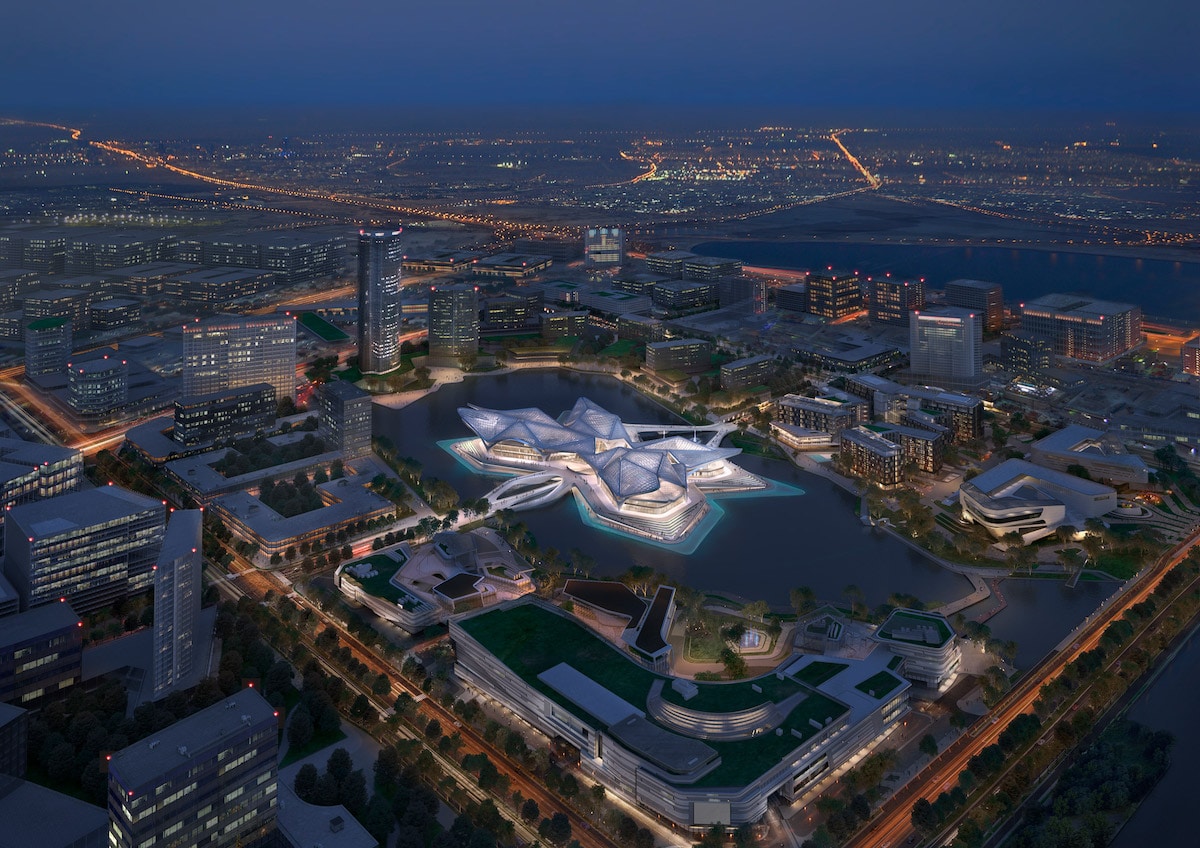
Rendering: Minmud
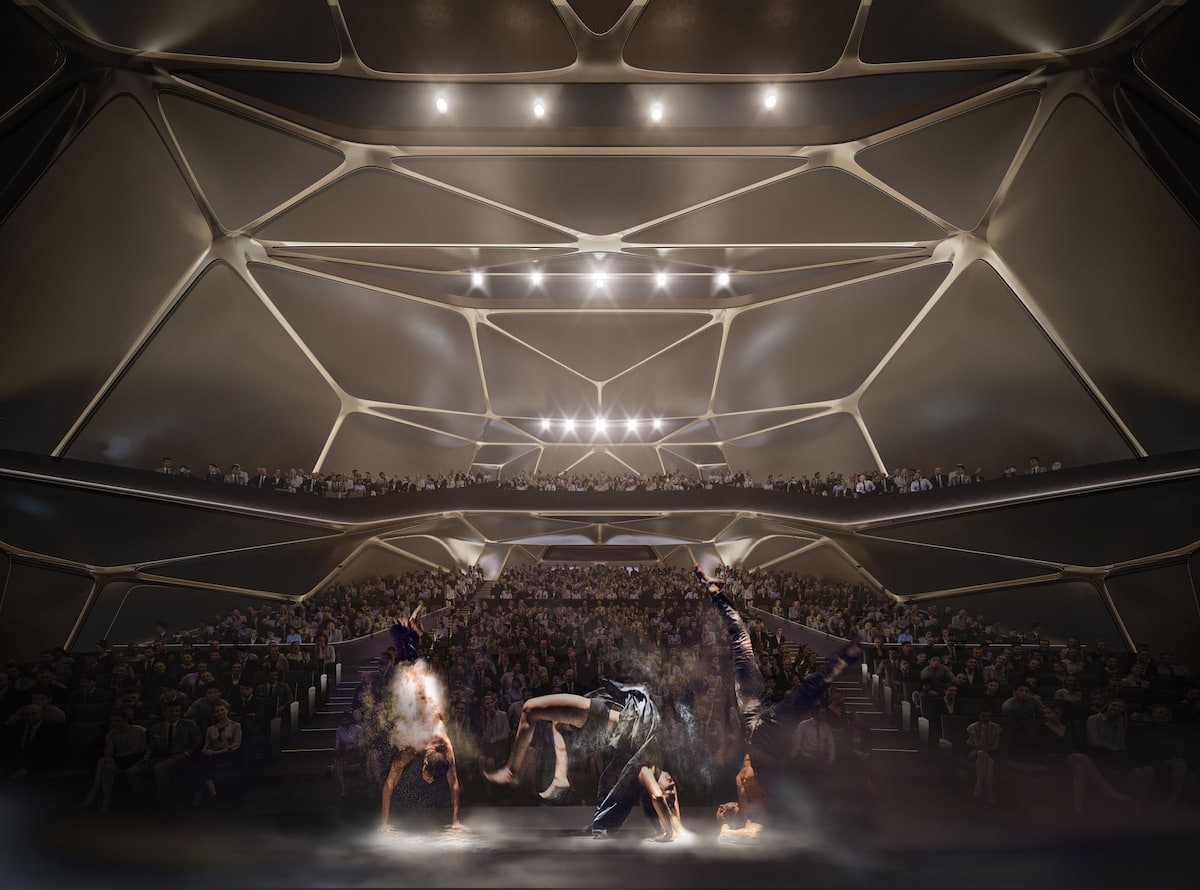
Rendering: Methanoia












































































